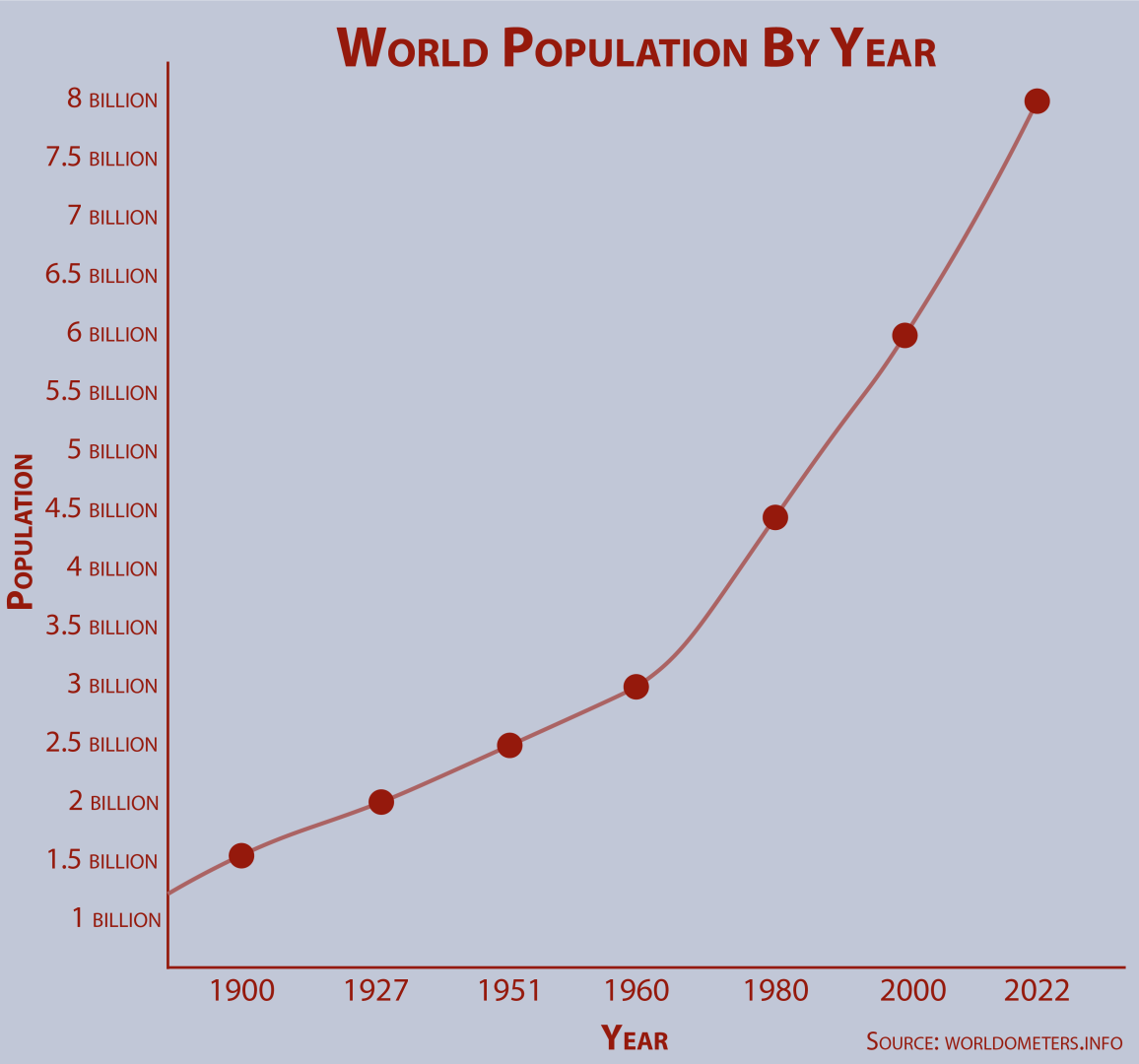As of Nov. 15, 2022, the Earth’s population hit eight billion people, according to the United Nations’ Department of Economic and Social Affairs. The global population is currently growing at its slowest rate since 1950 and fell below one percent of growth per year in 2020. In the United States specifically, there is a decline in the average life expectancy as well as in the birth rate, according to the Centers for Disease Control and Prevention and Tufts University’s non-partisan publication EconoFact.org, respectively. Retired Professor of Biology and Anthropology at the University of Indianapolis John Langdon said this is a reflection on the United States’ ability to recover from the COVID-19 pandemic, and more generally about American healthcare.
“You can see that decline [in population growth] because of COVID[-19] and then [other developed countries have] recovered. The United States hasn’t recovered—that’s saying some very negative things about our healthcare system,” Langdon said.
According to Langdon, another factor that contributes to the declining rate of population growth in the United States and other developed countries is the role of women and their availability to earn an education. According to Education Sub Saharan Africa, only 7.19% of women are enrolled in higher education programs in Sub-Saharan Africa, which is substantially lower than the global average for women, which is 41.66%. The rate of population growth is 2.6% for Sub-Saharan Africa, according to WorldBank.org. Comparing this to the United States, where the population growth rate is 0.1%, according to the World Bank, and the rate of women enrolled in higher education is 44% (in 2019), according to the Postsecondary National Policy Institute; Langdon said there does appear to be a link between women’s access to higher education and the rate of population growth.
According to the Population Reference Bureau, there is also a link between women’s ease of access to contraceptives, as countries in Sub-Saharan Africa are seeing the highest rate of population growth as a result of a lack of availability to them, especially to the poorest one-fifth of the population. For example, women in the richest one-fifth of the population in Tanzania have about three children, while those in the poorest one-fifth have an average of seven to eight, according to PRB. Assistant Professor of Earth-Space Science at the University of Indianapolis Nick Soltis says that one of the problems with the concentration of population growth in these countries is the imbalance cause and effect on climate change that these countries have.
“For example, when you talk about climate change, most of the countries that are producing the mass amounts of carbon dioxide and are leading to global warming are those developed nations,” Soltis said. “The countries that are feeling the impacts [of climate change] because the Earth doesn’t care where the carbon comes from, are places like the Sahel region of Africa.”
Consequently, as populations grow in these countries, there will be an increasing competition for resources, according to Soltis. As more people are being born and climate change is causing resources to deplete, people are forced to leave where they’re from in order to find places that have suitable water and suitable land for agriculture.
“As the population rate goes up, we see less availability of food…. Which requires people to… basically move or perish,” Soltis said.
Soltis also said the inequitable distribution of environmental impacts can lead to misconceptions about what are considered developing countries. He said these nations feel the impact of climate change, urbanization and biodiversity loss because of things that are happening elsewhere on Earth.
“When we talk about environmental issues, it’s not because people in these developing nations are not taking care of their environment or they don’t care. It’s because environmental impact doesn’t always come from right where you are…,” Soltis said.
On the other hand, there are also concerns for the countries that are seeing declines in the rate of their population growth, according to Langdon.
“The people who worry about the decrease [in population for developed countries] are the ones who are looking at the economic outlook,” Langdon said. “If the number of babies being born is not replacing the current set of adults that are retiring and so forth, we have fewer people working to support more people who aren’t working.”
Another effect of the declining rate of population growth is immigration, according to Langdon. According to Stanford News, natural disasters around the world forced 30 million people to migrate elsewhere. For the U.S., this manifests both as people moving elsewhere within the country as well as those who seek refuge in America from other countries. This mass migration of people can lead to political and ideological clashes within the U.S. as well, according to Langdon.
Soltis said that in order for individuals to help ease the effects of increasing global population and climate change, it is important to live sustainably whenever possible, as well as to recognize the impact the environment in which they live can have across the world.







